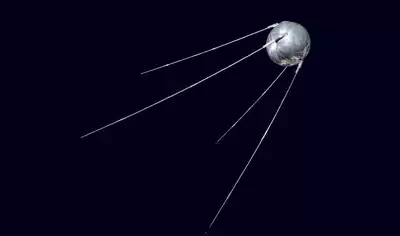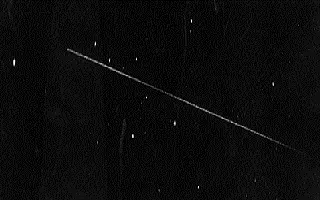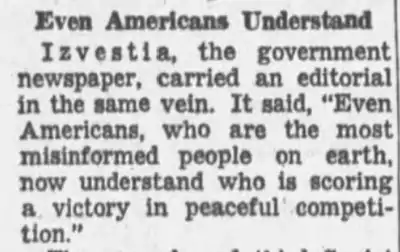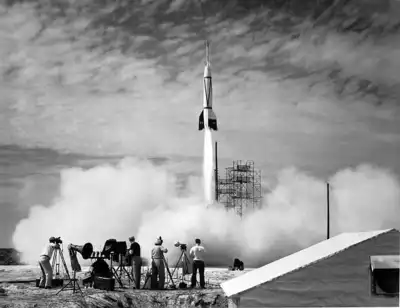I saw Sputnik!
by Ed Sawicki - March 25, 2019
Updated October 2, 2021

In early October 1957, I saw a bright white dot slowly moving across the night sky. My dad said it was the Soviet satellite, Sputnik. I didn't know then, but I know now that I wasn't watching Sputnik. I was looking at the second stage of the rocket that carried Sputnik to orbit. That second stage also achieved orbit, and followed behind Sputnik at a distance. It was outfitted with reflective material to make it highly visible. It was much brighter than the far smaller Sputnik satellite.

Art Griffin at the Newbrook Observatory in northern Alberta, Canada took the first North American photo of Sputnik in orbit on October 9, 1957.
Sputnik carried a radio transmitter beacon that sent a continuous series of beeps that anyone could receive with a shortwave radio. It was equipped with a sufficient battery supply to keep it transmitting for weeks. Its transmitter kept broadcasting for three weeks during 326 orbits of the Earth.
Shortwave radio use was common then, and millions of people worldwide could tune in. It wasn't a radio station rebroadcasting Sputnik's signals they were listening to—they were receiving it live and direct—from space!
In a sense, shortwave then was like the early Internet. It was exciting. It wasn't too many years later that I had my own shortwave radio, and Sputnik was one of the inspirations for getting it. Sputnik was also responsible for nipping any fear of heights in the bud. I had to climb on the roof of our house many times to string antennas.
The reflective material on the orbiting rocket and the beep-beep signals from Sputnik were effective Soviet propaganda tools. The Soviets wanted the world to know they were the technology leaders in space, and Sputnik was a clear sign that they were winning any perceived race for space with the West. They were saying so in their press. This newspaper clipping ran in U.S. newspapers in 1958.

To make matters worse, American journalists referred to U.S. satellites as U.S. Sputniks. This clipping was also from 1958.

The United States responded by creating the Advanced Research Projects Agency (ARPA), part of the Department of Defense, in February 1958. It then created the National Aeronautics and Space Administration (NASA) in October 1958.
Beating Sputnik
In July 1950, the first rocket fired from Cape Canaveral was named Bumper 8. It used a German V2 rocket as its first stage and a U.S. Army WAC Corporal sounding rocket as the second stage. The second stage reached almost 400 kilometers, higher than even modern Space Shuttles have flown.

If Bumper-8 had carried and deployed a radio transmitter beacon, it could have beat Sputnik by seven years. The WAC Corporal could not carry the weight of a Sputnik-sized transmitter. It could have carried a much lighter-weight beacon with a battery supply that would have lasted for a short duration.
In the early 1950s, the rocketmen at what would eventually become ARPA and NASA in 1958 weren't thinking of Cold War propaganda. If they had, they would have designed their launches differently.